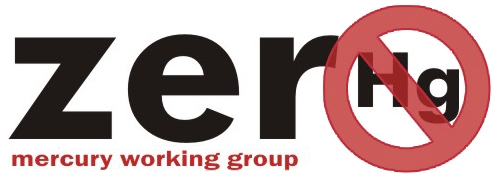Last week,115 Parties to the Minamata Convention on Mercury were present in Geneva for the fifth Conference of the Parties (COP-5) and took important decisions, among others, towards strengthening the Convention on phasing out mercury-added cosmetics.

Last week, 115 Parties to the Minamata Convention on Mercury were present in Geneva for the fifth Conference of the Parties (COP-5) and took important decisions, among others, towards strengthening the Convention on phasing out mercury-added cosmetics.
The COP requested a report to be developed and presented at COP6, based on information provided by the Parties and stakeholders, on the challenges in preventing the manufacture, and trade of mercury added cosmetics, such as (online) sales, and the measures to address those. A ban of the manufacture and trade of all “mercury-added cosmetics” (instead of only those containing “over 1 ppm mercury”) was also adopted by 2025 (apart from unavoidable traces), sending a strong signal that such products should not be on markets.
“We congratulate the African region who made this possible, through their proposed amendment, seeking to address the enforcement loopholes and implementation gaps related to mercury-added cosmetics”, said Elena Lymberidi-Settimo, for the European Environmental Bureau and Co-coordinator of the Zero Mercury Working Group. “It is important that Parties agree that toxic cosmetics are a global mercury crisis warranting coordinated international collaboration.”
Continued production and trade of these toxic skin lighteners has presented enforcement challenges, as detailed last month in a new ZMWG Report. This was further reinforced when the Environmental Investigation Agency (EIA) released an undercover investigation last month that identified ammoniated mercury as one of the key mercury compounds that is being intentionally added to skin lighteners. Although centres of production are mostly outside the EU, the EIA report revealed that countries such as Spain have been used as transit ports, facilitating the transportation of mercury added compounds for SLPs production.
Complemented by a recent NRDC study, the COP further decided to initiate a study of the global supply, production, trade and use of mercury compounds.
Rico Euripidou, Campaign coordinator at groundWork in South Africa, said: “The manufacture and trade of mercury compounds used for the production of illegal mercury added skin lightening products (SLPs) should be banned. Eradicating products such as mercury added SLPs is important for an unscrupulous industry that is itself rooted in colourism and that profits from the mass poising of non-white people, is vital, especially given that the harm caused in our region. “
“It is important that the EU uses the ongoing process to revise the EU Mercury regulation, and already ban such compounds”, continued Charline Cheuvart, Mercury Policy Officer at the European Environmental Bureau.
Mercury is a neurotoxin that lightens the skin by suppressing the production of melanin and can also remove age spots, freckles, blemishes and wrinkles. But it may lead to rashes, skin discolouration and blotching and enter the body via absorption through the skin, inhalation, or orally. Mercury damages the nervous system. Long-term use of mercury-added SLPs may damage the eyes, lungs, kidneys, digestive and immune systems.
###
For media inquiries contact:
Elena Lymberidi-Settimo, elena.lymberidi@eeb.org; +32496532818
Charline Cheuvart, charline.cheuvart@eeb.org; T: +32 2 289 13 08
Rico Euripidou, rico@groundwork.org.za
Michael Bender mercurypolicy@aol.com, T: +1-802-917-8222
Further reading
- US focused ZMWG PR, 7 November 2023, https://www.zeromercury.org/un-convention-agrees-to-phase-mercury-out-of-cosmetics-by-2025/
- https://minamataconvention.org/en/news/minamata-convention-cop-5-takes-crucial-steps-its-mission-eliminating-mercury-pollution
- ZMWG report and PR , 12 October 2023, https://www.zeromercury.org/mercury-added-skin-lightening-creams-campaign/ , https://www.zeromercury.org/bebuilder-3548/
- EIA investigative report, 17 October 2023, https://www.zeromercury.org/new-eia-report-exposes-a-global-failure-to-prevent-the-deliberate-addition-of-toxic-mercury-to-skin-lightening-products/
- NRDC report on compounds, https://www.nrdc.org/sites/default/files/2023-10/mercury-compounds-inventory-feasibility-study-202303.pdf





